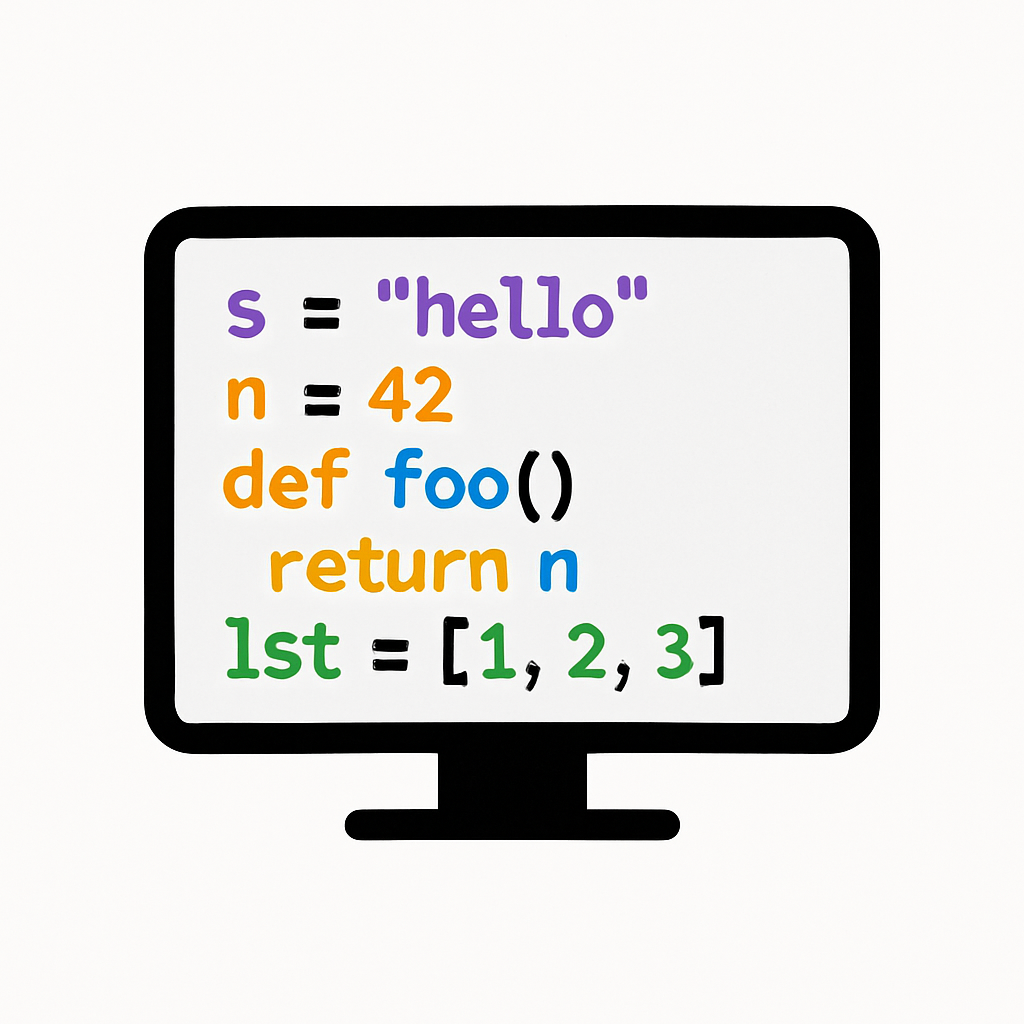 In this lesson, you'll explore common data types in Python and how to use them in Flask apps. This builds on handling requests, focusing on strings, integers, lists, and dictionaries in a backend context.
In this lesson, you'll explore common data types in Python and how to use them in Flask apps. This builds on handling requests, focusing on strings, integers, lists, and dictionaries in a backend context.
Data types are fundamental in programming, defining the kind of data you can work with. You'll create a Flask app that processes different data types from user inputs. Here's what you'll do:
By the end, you'll understand how to manage various data types in web backends.
To start, create a folder for this lesson's project to keep things organised.
FlaskDataTypes'.File > Open Folder, then choose 'FlaskDataTypes'.With your folder ready, next you'll set up the environment.
Create a virtual environment for your project.
View > Command Palette.Python: Create Environment' and select it.Venv'..venv' folder.Open a terminal in VS Code to install Flask if needed.
View > Terminal.pip install flask.Let's create a Flask app that handles string data from a form.
Create 'app.py' in 'FlaskDataTypes'.
Add this code:
from flask import Flask, render_template, request
app = Flask(__name__)
@app.route('/')
def home():
return 'Welcome to Data Types in Backend!'
@app.route('/string', methods=['GET', 'POST'])
def handle_string():
if request.method == 'POST':
text = request.form['text']
return f'You entered the string: {text}'
else:
return render_template('string_form.html')Create a 'templates' folder, and inside it, 'string_form.html' with:
<!DOCTYPE html>
<html>
<head><title>String Input</title></head>
<body>
<h1>Enter a String</h1>
<form method="post" action="/string">
<input type="text" name="text">
<button type="submit">Submit</button>
</form>
</body>
</html>action is set to '/string', which matches the route defined in the Flask app. This ensures the form data is sent to the correct endpoint.Run python -m flask run.
Visit http://127.0.0.1:5000/string, enter text, submit, and see the response.
Stop with Ctrl+C.
